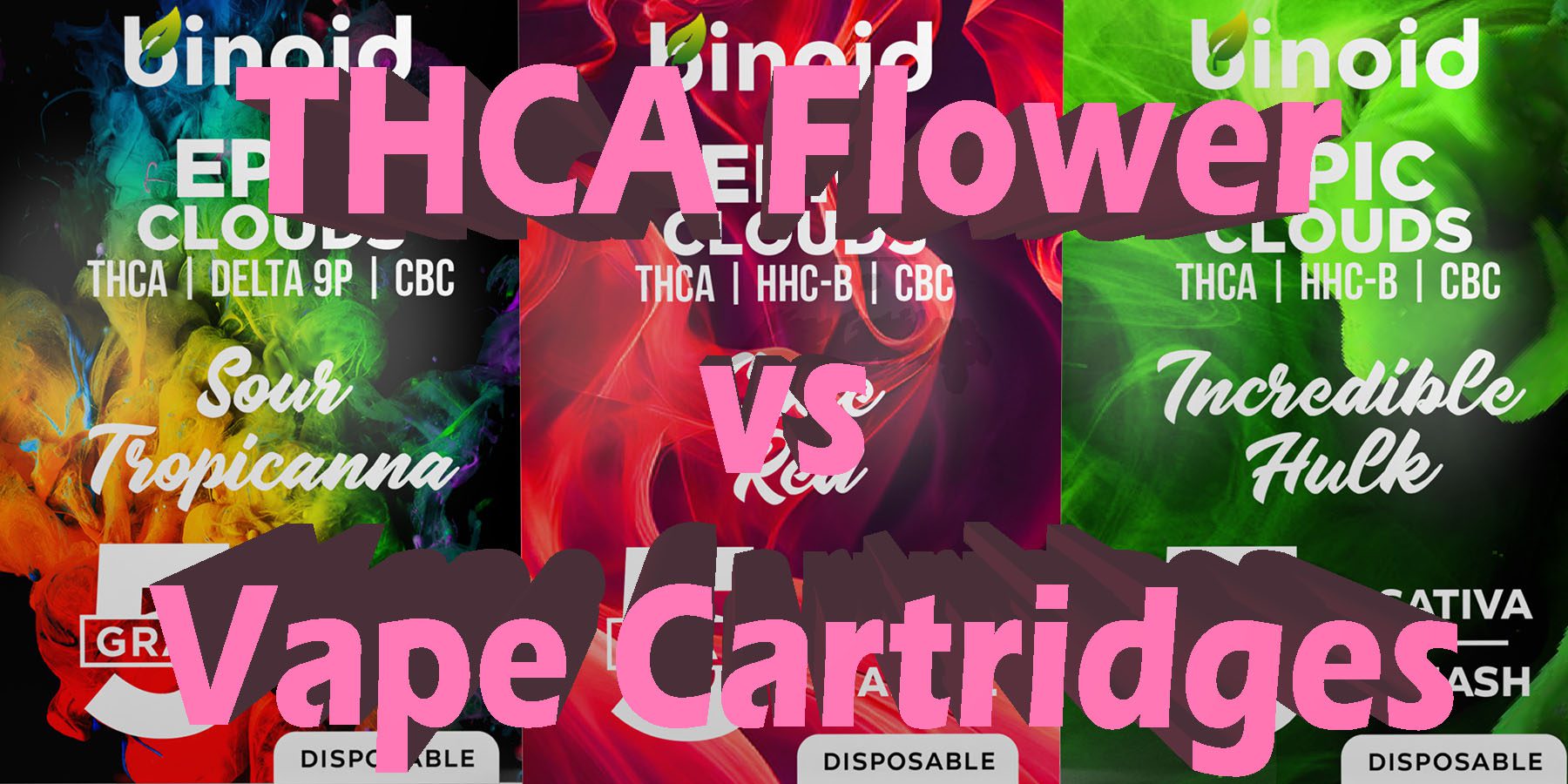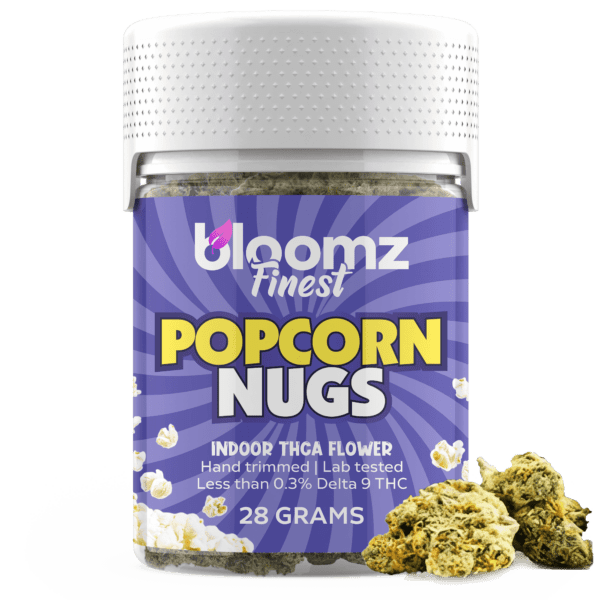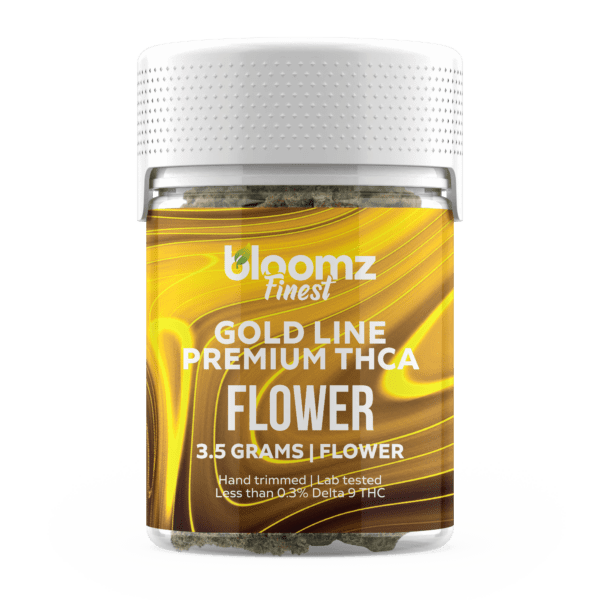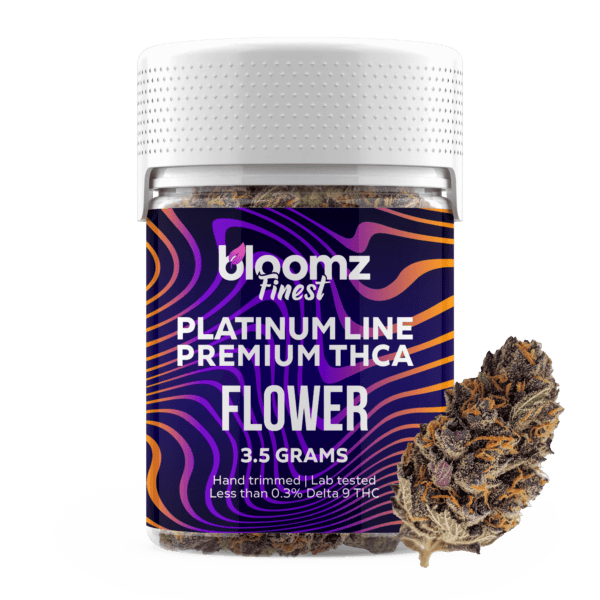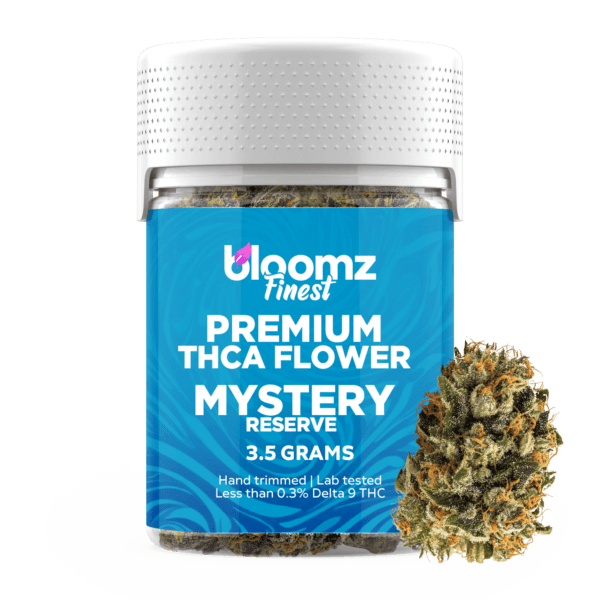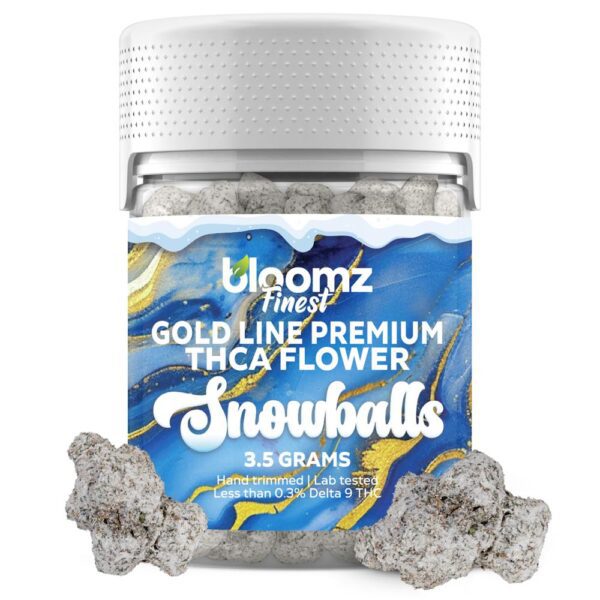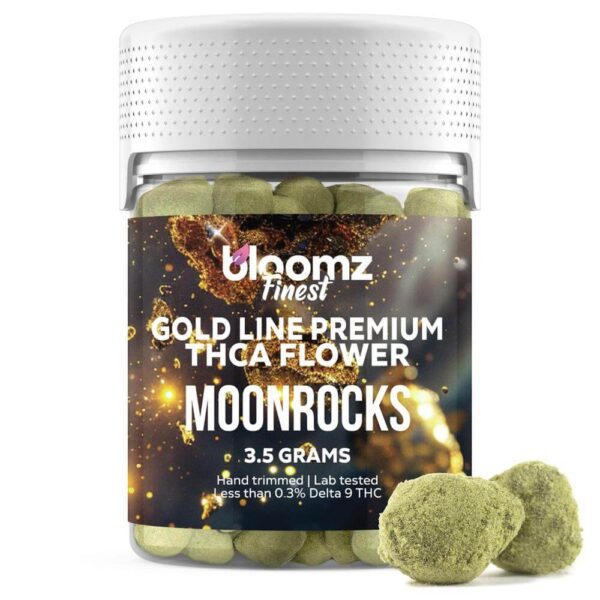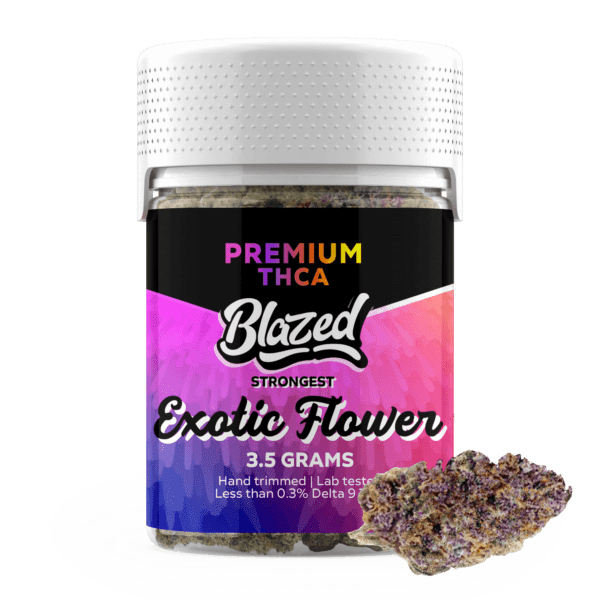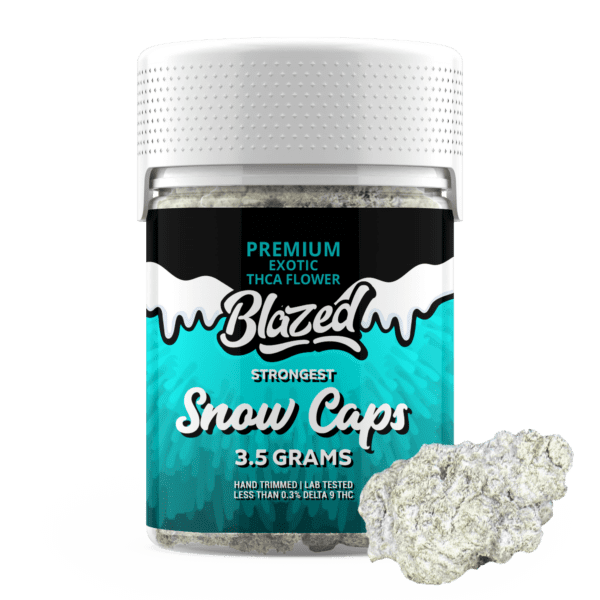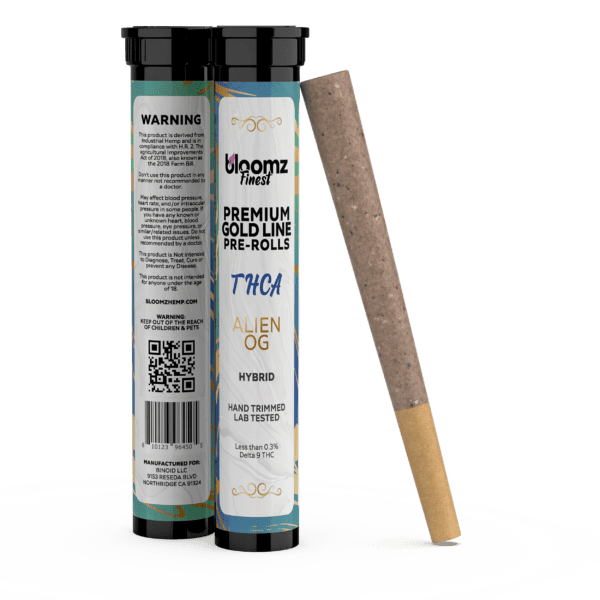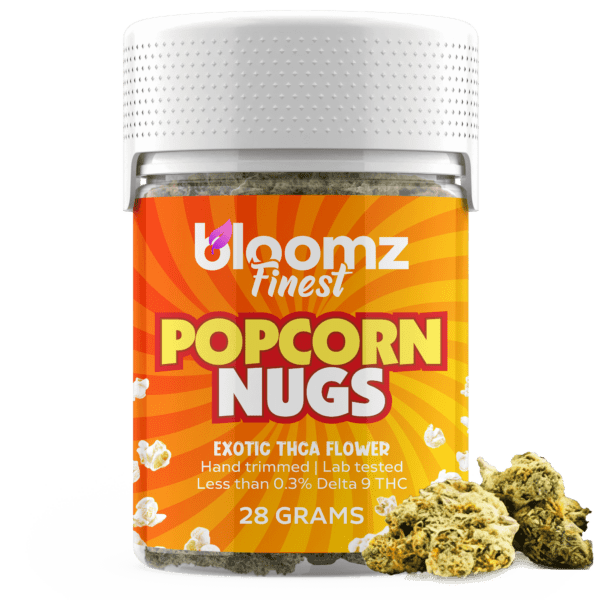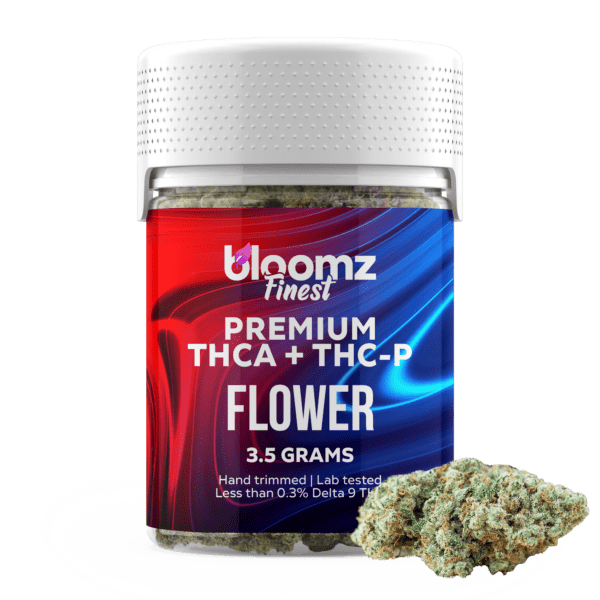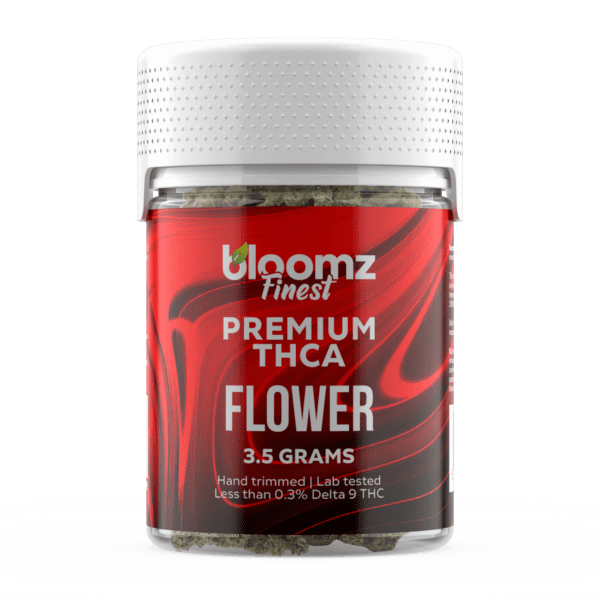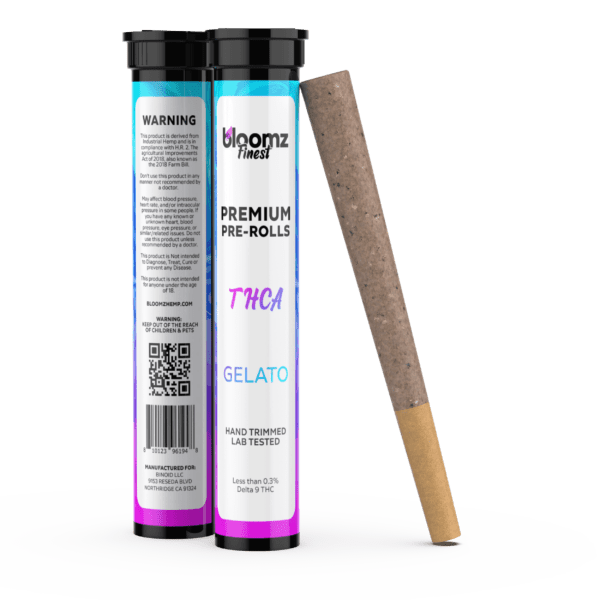The modern marketplace for hemp-derived products is a dazzling landscape of innovation and tradition, a vibrant crossroads where timeless cultivation techniques meet cutting-edge scientific discovery. For enthusiasts and newcomers alike, navigating this world presents a fascinating choice between the raw, authentic character of the plant and the sleek, potent precision of its extracted essence. This isn’t merely a decision between two different products; it’s a choice between two distinct philosophies and experiences.
On one side stands the fragrant, crystalline-dusted THCA flower, a direct link to the agricultural artistry that has been refined over generations. On the other, the discreet and powerful, cannabinoid-infused pre-filled vape cartridge, a marvel of modern extraction technology that delivers a consistent and controlled experience with futuristic simplicity. Each path offers its own unique set of rituals, sensations, and nuances, inviting users to explore what best aligns with their lifestyle, preferences, and desired state of mind.
To Buy THCA Flower Click Here
Recommended products
-
THCA Smalls
$149.99$256.99 -
THCA Flower – Indoor Exotics – Gold Line
$37.99$69.99 -
THCA Flower – Platinum Line
$49.99$79.99 -
THCA Flower – Mystery Reserve
$41.99$79.99
Why It’s Important to Breakdown the Matchup of THCA Flower vs. Pre-Filled Vape Cartridges
Choosing between the ancestral form of the hemp plant and its highly refined, technologically advanced counterpart is a significant decision that shapes the very nature of one’s experience. A detailed breakdown of this matchup is crucial because it empowers consumers with the comprehensive knowledge needed to make a truly informed choice that resonates with their personal preferences and daily routines. The differences extend far beyond mere appearance, delving into the core of how cannabinoids are delivered, perceived, and integrated into a lifestyle.
Understanding these distinctions—from the chemical composition and the required consumption hardware to the subtlety of the entourage effect versus the precision of isolated compounds—allows an individual to tailor their journey, ensuring the selected product aligns perfectly with their expectations for flavor, convenience, potency, and overall ritual. This exploration is not about declaring a universal winner, but rather about illuminating the unique virtues and considerations of each contender so that every person can confidently select their champion.
This in-depth comparison is essential for several key reasons. Firstly, it addresses the fundamental difference in user experience. The act of handling, grinding, and smoking or vaporizing flower involves a hands-on, sensory ritual that many find grounding and authentic. Conversely, the click-and-go simplicity of a vape cartridge appeals to those who prioritize convenience, discretion, and modern efficiency. Secondly, the conversation must cover the vast differences in chemical profiles. THCA flower offers a full spectrum of cannabinoids and terpenes as they exist in the plant, potentially leading to a more nuanced, holistic “entourage effect.” Vape cartridges, while often enhanced with terpenes, typically feature a distillate base that can provide a more targeted, predictable experience centered on specific cannabinoids.
Furthermore, considerations of portability, odor, and social setting play a pivotal role. A vape pen can be used discreetly in many situations where preparing and consuming flower would be impractical or unwelcome. By carefully dissecting these factors, along with legality, cost-effectiveness, and the learning curve associated with each, we provide a complete picture, transforming a potentially overwhelming choice into a clear and calculated personal decision.
Contender #1: THCA Flower
In the ever-expanding universe of hemp-derived products, THCA flower stands as the venerable patriarch, the foundational source from which so many other innovations spring. It represents a return to the roots of the plant, offering an experience that is deeply connected to the earth and the art of cultivation. This is the classic form, celebrated for its complex aromas, rich flavors, and the visual beauty of its crystalline-dusted buds. For many connoisseurs, THCA flower is not just a product but an experience in itself—a tactile and aromatic journey that begins the moment you open the jar. It engages all the senses, from the sticky texture of the trichomes to the crackle of the ignited herb, providing a full-bodied ritual that modern alternatives often seek to replicate but can rarely duplicate. It is the benchmark against which all other forms are measured, a testament to the enduring appeal of the natural, unprocessed plant in all its glory.
At the heart of this classic contender lies a fascinating cannabinoid known as tetrahydrocannabinolic acid (THCA) – in its raw, unheated state within the cannabis and hemp plants, THCA is a non-intoxicating acidic precursor to the most famous cannabinoid of all, Delta 9 THC. Imagine it as the dormant form, patiently waiting for the right conditions to transform. This is why consuming raw, freshly harvested hemp flower will not produce the euphoric effects commonly associated with THC. The molecular structure of THCA includes an extra carboxyl group (a chain of carbon, oxygen, and hydrogen atoms) that prevents it from binding effectively with the CB1 receptors in the brain, the primary neurological sites responsible for producing intoxicating effects. It exists in abundance on the trichomes—the tiny, glistening, crystal-like glands that cover the surface of the buds and leaves of the plant.
The magical transformation from non-intoxicating THCA to psychoactive Delta 9 THC occurs through a process called decarboxylation. This is a scientific term for a very simple action: applying heat. When you light a pre-roll, heat the chamber of a dry herb vaporizer, or bake the flower in an oven to make edibles, you are causing that extra carboxyl group on the THCA molecule to break off and release as carbon dioxide (CO2). Once this happens, the molecule is converted into Delta 9 THC, now perfectly shaped to bind with those CB1 receptors and deliver its well-known effects.
This crucial, heat-activated conversion is the entire basis for why THCA flower has become so popular. It allows for a product that is legally compliant in its raw form under federal law, yet capable of providing a potent and authentic experience when consumed in the traditional manner. Understanding this simple yet profound chemical reaction is the key to appreciating the unique position THCA flower holds in the market.
So then, THCA flower is, quite simply, premium hemp flower that has been selectively bred and cultivated to produce exceptionally high levels of tetrahydrocannabinolic acid while keeping the concentration of Delta 9 THC below the legal federal limit of 0.3% by dry weight. Visually, aromatically, and texturally, it is virtually indistinguishable from traditional high-THC cannabis flower found in state-licensed dispensaries. It is the result of meticulous genetic selection and advanced agricultural techniques aimed at maximizing the plant’s natural production of the THCA cannabinoid. This allows consumers in many regions to legally purchase a product that offers an experience identical to that of traditional cannabis, as the simple act of applying heat (smoking or vaping) converts the abundant THCA into Delta 9 THC. The production of high-quality, compliant THCA flower is a multi-stage process that requires precision, patience, and scientific oversight.
Recommended products
The production of this premium, legally compliant flower is a sophisticated agricultural endeavor, a multi-stage process where every detail is paramount to the final quality:
Genetic Selection and Breeding: The process begins with expert breeders selecting specific hemp cultivars known for their genetic predisposition to produce high concentrations of THCA. Through careful cross-breeding and stabilization over multiple generations, they create unique strains that consistently yield potent flowers while naturally maintaining Delta 9 THC levels well below the legal threshold. This foundational step is critical for ensuring both the quality and compliance of the final product.
Meticulous Cultivation: Once the right genetics are secured, the seeds or clones are cultivated in highly controlled environments. Indoor cultivation is often preferred as it allows growers to manage every variable—light cycles, temperature, humidity, nutrient delivery, and airflow—with scientific precision. This level of control protects the plants from pests and contaminants and encourages the maximum development of cannabinoids and terpenes, which are responsible for the flower’s potency, aroma, and flavor.
Strategic Harvesting: Timing the harvest is an art form in itself. Growers closely monitor the plant’s trichomes, the microscopic resin glands that produce cannabinoids. Using magnifying tools, they watch for the trichomes to transition from clear to a milky white or amber color. Harvesting at the peak of this cycle ensures that the THCA content is at its absolute highest and that the terpenes are fully developed, locking in the strain’s signature profile.
Slow Drying and Curing: After harvesting, the flower is hung to dry in a dark, climate-controlled room with specific temperature and humidity levels. This slow drying process, which can take one to two weeks, is crucial for preserving the delicate terpenes and preventing the growth of mold or mildew. Following the initial dry, the buds are trimmed and placed in airtight containers for the curing phase. Curing can last for several weeks to months, a process where the buds are periodically “burped” to release moisture and gases. This patient process significantly enhances the smoothness, flavor, and aroma of the final product.
Comprehensive Laboratory Testing: The final and most crucial step for legal compliance is third-party lab testing. A sample from each batch is sent to an independent laboratory to be analyzed. The lab provides a Certificate of Analysis (COA) that verifies the precise cannabinoid profile, confirming that the Delta 9 THC concentration is at or below the 0.3% federal limit. This COA also tests for pesticides, heavy metals, and other contaminants, ensuring the product is clean, safe, and legal for sale.
The world of THCA flower is not a monolith though; it’s a rich and diverse ecosystem with various categories and types, each offering a unique set of characteristics to suit different preferences and budgets. This variety stems from differences in cultivation methods, bud size, and special enhancement techniques. Understanding these distinctions allows consumers to fine-tune their selection, whether they are seeking the absolute pinnacle of artisanal quality, a cost-effective option for regular use, or an exceptionally potent, enhanced experience. From the meticulously controlled environment of an indoor grow to the sun-kissed fields of an outdoor farm, each type tells a different story and delivers a distinct product:
Indoor THCA Flower: This category represents the gold standard in cultivation. Grown in completely controlled indoor environments, these plants receive perfect lighting, climate, and nutrient regimens. This meticulous care results in highly potent, visually stunning buds that are dense, perfectly trimmed, and coated in a thick layer of frosty trichomes. The terpene profiles are often more pronounced and complex, leading to exceptionally rich aromas and flavors. Indoor flower is the top-shelf choice for connoisseurs who prioritize aesthetic perfection and maximum potency.
Outdoor THCA Flower: Cultivated under the natural sun and in open air, outdoor THCA flower offers a more rustic and traditional character. While it may not always have the pristine, manicured appearance of its indoor counterpart, it can develop robust and unique terpene profiles influenced by the natural soil and environment (the terroir). Outdoor buds are often larger and can be a more cost-effective option, making them a great choice for those who appreciate a more natural product and consume larger quantities.
THCA Smalls: As the name suggests, “smalls” are smaller-sized buds from the same high-quality plants that produce larger nugs. These buds are typically found lower on the plant where they receive less direct light, resulting in a more petite size. Despite their smaller stature, they pack the same potency and terpene profile as their larger siblings. Smalls are an excellent value proposition, offering the quality of premium indoor or outdoor flower at a more accessible price point, making them perfect for grinding up for pre-rolls or vaporizers.
THCA Nugs: This is the standard form of flower, referring to the full-sized, trimmed buds, or “nugs” (nuggets). These are the main colas and larger formations from the plant, boasting the classic appearance that most consumers associate with premium flower. They offer the full visual and tactile experience, showcasing the strain’s unique structure, color, and trichome coverage. Nugs are ideal for those who appreciate the ritual of breaking down the flower by hand and admiring its quality before consumption.
THCA Snowballs/Snow Caps: This is an enhanced type of THCA flower created for maximum potency. The process involves taking a premium THCA nug and coating it in pure THCA isolate, which is a fine, white, crystalline powder that is nearly 100% pure THCA. This outer layer gives the bud a “snow-covered” appearance, hence the names “Snowball” or “Snow Cap.” The result is an incredibly potent product that significantly elevates the THCA concentration far beyond what is naturally possible in the plant alone.
THCA Moonrocks: Taking enhancement a step further, THCA Moonrocks are the titans of potency in the flower world. Creating them is a three-step process: first, a high-quality THCA nug is selected. Second, it is coated in a sticky layer of heated cannabinoid distillate (often a high-THCA or Delta 8 THC concentrate). Third, while still sticky, the oil-covered nug is rolled in a generous amount of kief, which is the collected resinous trichomes that have been sifted from the flower. This trifecta of flower, distillate, and kief creates a dense, multi-layered product with an astronomical potency level.
THCA Pre-Rolls, Blunts & Joints: For those who value convenience above all else, pre-rolled options are the perfect solution. THCA Pre-Rolls are simply ground THCA flower expertly packed into rolling papers (joints) or hemp wraps (blunts) by a machine or by hand. This eliminates the need for the user to own a grinder, papers, or possess the skill of rolling. They offer a ready-to-use, portable, and shareable format that provides a classic smoking experience without any of the preparation.
Exotic THCA Flower: The term “Exotic” refers to rare and unique strains that are not commonly found. These are often boutique, small-batch cultivars with highly sought-after genetics that result in unusual colorations (like deep purples and vibrant oranges), incredibly complex and novel aroma/flavor profiles (such as candy, dessert, or tropical fruit notes), and exceptionally high potency. Exotic strains are for the adventurous user looking to experience the cutting edge of cannabis breeding.
AA, AAA, and AAAA Exotic THCA Flower: This grading system, originating from the legacy market, is sometimes used by vendors to classify the quality of their flower, particularly exotic strains. While not standardized across the industry, it generally signifies ascending levels of quality. AA (Double A) is often considered mid-grade—good quality but may have minor imperfections in trim, density, or aroma. AAA (Triple A) is the standard for high-quality, top-shelf flower, representing most of the excellent products on the market with great bag appeal, strong aroma, and potent effects. AAAA (Quad A), or “Quads,” is reserved for the absolute best of the best—the pinnacle of cannabis cultivation. This flower is virtually flawless in every aspect: perfect bud structure, an overwhelming and complex aroma, a thick and sticky coating of trichomes, and exceptionally high cannabinoid and terpene content.
The identity of any given THCA flower is defined by its strain, a specific variety of the plant bred to produce a unique combination of cannabinoids, terpenes, and flavonoids. These compounds work together in synergy to create the strain’s signature effects, aroma, and flavor profile. The vast world of hemp genetics is generally categorized into three primary classifications: Indica, Sativa, and Hybrid. These labels provide a foundational roadmap for consumers, offering a general forecast of the experience a particular strain is likely to provide. While the science has evolved to show that the terpene profile is a more accurate predictor of effects than the Indica/Sativa classification alone, these categories remain an invaluable and widely understood tool for navigating the diverse offerings and helping users align their choice with their desired outcome:
Indica: Traditionally associated with plants that are shorter, bushier, and have broad leaves, Indica strains are renowned for delivering profoundly relaxing and calming effects on the body. They are often the go-to choice for evening use or for moments when the primary goal is to unwind, decompress, and sink into a state of serene tranquility. The terpene profiles of classic Indica strains are frequently dominated by myrcene, which is known for its earthy, musky, and slightly fruity notes and is often linked to sedative-like qualities. Other common terpenes include linalool, with its floral and lavender-like scent, and caryophyllene, which provides a spicy, peppery kick. Popular examples of famous Indica genetics you might find in THCA flower include strains like Granddaddy Purple, Northern Lights, and Bubba Kush, all celebrated for their ability to promote a chilled-out and blissful state.
Sativa: In contrast, Sativa strains typically originate from taller, lankier plants with narrow leaves and are best known for producing uplifting, energizing, and cerebrally-focused effects. These are the strains often chosen for daytime activities, creative projects, social gatherings, or any situation where a boost of mental clarity and euphoric energy is desired. Sativas tend to be rich in terpenes like limonene, which offers a bright, zesty citrus aroma, and pinene, which contributes a fresh, sharp scent of pine. These aromatic compounds are often associated with mood elevation and alertness. Well-known Sativa-dominant strains that have been bred into the THCA market include classics like Sour Diesel, Jack Herer, and Green Crack, all famous for their invigorating and thought-provoking experiences that can spark creativity and conversation.
Hybrid: Occupying the vast middle ground between the two poles of Indica and Sativa, Hybrid strains are created by cross-breeding plants from both lineages. The goal of creating a hybrid is to capture the most desirable traits from each parent strain, resulting in a balanced and multifaceted experience. Hybrids can be either Indica-dominant, Sativa-dominant, or a true 50/50 balance. An Indica-dominant hybrid might offer gentle physical relaxation without being overly sedating, while a Sativa-dominant hybrid could provide a euphoric mental uplift without the raciness some pure Sativas can induce. This category offers immense variety and allows for highly nuanced effects, making hybrids the most popular and diverse category on the market. Strains like Blue Dream, GSC (formerly Girl Scout Cookies), and OG Kush are legendary hybrids that showcase this perfect blending of effects, offering a versatile experience that can be enjoyed at almost any time of day.
Now, THCA flower’s legal status here in the USA is a fascinating and somewhat complex topic that hinges on specific chemical definitions established by federal law. The cornerstone of its legality is the 2018 Agriculture Improvement Act, more commonly known as the 2018 Farm Bill. This landmark piece of legislation federally legalized the cultivation and sale of hemp, which it defined as the cannabis sativa L. plant containing a Delta 9 THC concentration of not more than 0.3 percent on a dry weight basis. The key to THCA flower’s compliance lies in that precise wording. Because THCA is a distinct cannabinoid from Delta 9 THC, a flower can contain a very high concentration of THCA—say, 20% or more—and still be classified as legal hemp, as long as its Delta 9 THC level remains at or below the 0.3% threshold.
This legal distinction creates what some call a “loophole,” though it is more accurately a direct consequence of the bill’s scientific definition of hemp. The law focuses exclusively on the concentration of Delta 9 THC at the time of testing, not what the flower could become after being heated. This allows producers to cultivate, harvest, and sell THCA-rich flower across many states.
However, the legal landscape is not uniform across the country. Some states have passed their own laws that adopt a “total THC” standard. This standard calculates the potential Delta 9 THC content by adding the existing Delta 9 THC to the amount of THCA that could be converted (using a specific formula: Total THC = %Δ9THC + (%THCA × 0.877)). In states with total THC laws, high-THCA flower is considered illegal. Therefore, while THCA flower is federally compliant under the Farm Bill, its legality can vary significantly at the state level, making it crucial for consumers to be aware of their local regulations.
The versatility of THCA flower is one of its most celebrated attributes, allowing users to tailor their consumption method to fit their specific needs, preferences, and available equipment. Unlike some single-use products, raw flower serves as a universal starting point for a wide range of experiences, each offering a distinct onset time, duration, and overall character. This flexibility empowers the user to be the master of their own session, whether they prefer the immediate and flavorful clouds of a vaporizer, the timeless ritual of smoking, or the long-lasting, profound effects of a homemade edible.
Each method utilizes the principle of decarboxylation to unlock the flower’s potential, but the path it takes to get there profoundly shapes the final journey:
Vaping (using a portable or desktop vaporizer): Vaporizing, or “vaping,” is a modern method that involves heating the THCA flower in a device called a dry herb vaporizer to a temperature that is hot enough to decarboxylate the THCA into THC and vaporize the cannabinoids and terpenes, but not hot enough to cause combustion. This process creates a smooth, flavorful vapor to be inhaled instead of harsh smoke. Many connoisseurs consider this the superior method for experiencing the full, nuanced flavor profile of a strain, as the lower temperatures preserve the delicate terpenes that are often destroyed by the high heat of a flame. Vaping is also considered more efficient, as it extracts the active compounds more completely, and it produces a much less potent and lingering odor compared to smoking.
Smoking: This is the most traditional and widely recognized method of consuming flower. It involves igniting the ground-up buds in various apparatuses, such as a pipe, a water pipe (bong), or rolled into a joint or blunt. The act of combustion instantly decarboxylates the THCA, delivering the resulting THC and other compounds to the lungs for rapid absorption into the bloodstream. This method is cherished for its ritualistic nature, simplicity, and the immediate onset of its effects. While it may not preserve the subtle notes of the terpene profile as well as vaping, the robust and familiar experience of smoking remains a deeply ingrained and beloved practice for millions of users.
Cooking/Baking: For those who prefer to avoid inhalation altogether, THCA flower can be used to create potent and long-lasting edibles. This method requires a preliminary step of decarboxylation in an oven. The flower is coarsely ground and baked at a low temperature (around 220-240°F or 105-115°C) for 30-40 minutes. This controlled heating converts the THCA into Delta 9 THC, “activating” the flower. Once decarboxylated, the flower can be infused into a fat-based carrier like butter or coconut oil. This infused “cannabutter” or “canna-oil” can then be used as a base for baking or cooking a wide variety of recipes, from brownies and cookies to savory dishes. Edibles provide a much different experience: the onset is delayed (typically 45 minutes to 2 hours), but the effects are significantly stronger and can last for many hours.
The experience delivered by THCA flower is a rich tapestry woven from its complex chemical profile, culminating in a full-bodied and nuanced effect once decarboxylated. When heated, the converted Delta 9 THC becomes the primary driver of the experience, producing feelings of euphoria, uplift, and a pleasant shift in perception. However, the effects are not solely dictated by this single cannabinoid. THCA flower contains a whole symphony of other compounds, including minor cannabinoids like CBG and CBC, and a vast array of aromatic terpenes. This complete chemical matrix gives rise to what is known as the “entourage effect,” a theory suggesting that all these compounds work in synergy to modulate and enhance one another’s properties, creating an effect that is greater than the sum of its parts.
This synergy is what makes each strain unique. A strain high in the terpene myrcene might produce a deeply relaxing and tranquil experience, perfect for unwinding at the end of the day. In contrast, a strain rich in limonene and pinene could inspire a wave of creative energy and focus, making it more suitable for daytime activities. The sensory experience is also a huge part of its effects; the pungent, delightful aroma released upon opening a jar and the rich, complex flavors perceived when smoking or vaping contribute significantly to the overall ritual and enjoyment. The onset of effects from inhalation is rapid, typically felt within minutes, allowing for easy titration and control over the intensity of the experience. The result is a holistic journey that engages the senses and offers a spectrum of potential feelings, from gentle, blissful calm to soaring, energetic bliss.
Pros & Cons
Like any product, THCA flower is accompanied by its own distinct set of compelling advantages and practical disadvantages. A thorough and honest evaluation of these pros and cons is a vital step for any consumer who is trying to determine if this classic, natural form of the hemp plant is the right fit for their specific lifestyle, environment, and personal preferences. The undeniable appeal of its authenticity, versatility, and rich sensory experience must be carefully weighed against practical considerations such as its noticeable odor, the need for accessories, and its overall lack of discretion.
Pros:
Authentic, Full-Spectrum Experience: A primary advantage of THCA flower is its delivery of the plant’s complete and unadulterated chemical profile. This includes a vast spectrum of cannabinoids, a complex array of aromatic terpenes, and various flavonoids, all working in concert to produce the synergistic entourage effect. This results in a more nuanced, multi-layered, and holistic experience that many users find to be more satisfying and well-rounded than products made from isolated cannabinoid extracts.
Deep Sensory Engagement: The journey with THCA flower is a true feast for the senses that begins long before the moment of consumption. The visual allure of a perfectly cured, trichome-laden bud, the potent and unique aroma that blossoms upon grinding it, and the rich tapestry of flavors perceived upon inhalation are all fundamental parts of the ritual. This profound sensory engagement fosters a deeper connection to the plant and a level of enjoyment that is difficult to replicate with other formats.
Unmatched Versatility in Consumption: THCA flower is exceptionally versatile, serving as the foundational ingredient for a multitude of consumption methods. Users retain the freedom to choose whether they wish to smoke it in a traditional joint for a classic experience, vaporize it for a cleaner and more flavor-forward session, or even decarboxylate it in their own kitchen to create custom homemade edibles. This adaptability allows one to tailor their experience to their mood, setting, or available tools at any given time.
Immediate Feedback and Effect Onset (Inhalation): When THCA flower is either smoked or vaporized, the onset of its effects is felt almost instantaneously, typically within a few short minutes of inhalation. This rapid feedback loop provides for immediate gratification and allows for incredibly precise control over the intensity of the experience. Users can easily self-regulate their intake, taking small inhalations and waiting to gauge the effects before deciding to consume more, which is a significant factor in preventing overconsumption.
Greater Control Over the Entire Process: From the act of selecting a specific nug to grinding it to a desired consistency and packing a bowl or rolling a joint, using flower provides a hands-on and fully customizable process. The user controls every single aspect of the preparation and consumption. This ritualistic element is highly prized by many enthusiasts who find it to be a grounding, mindful, and enjoyable part of their routine.
Transparency Through Visual Inspection: With whole THCA flower, what you see is precisely what you get. Consumers have the ability to visually inspect the quality of the product before they purchase or use it, looking for positive indicators like trichome density, vibrant colors, proper bud structure, and a tight trim. You can also use your sense of smell to gauge its freshness and terpene profile. This inherent transparency provides a level of confidence and assurance not always possible with opaque oils in a sealed device.
Superior Cost-Effectiveness in Bulk: While the initial price of a premium eighth of an ounce might be comparable to a disposable vape, flower almost always becomes the more economical choice when purchased in larger quantities. Buying a quarter, half, or full ounce can dramatically reduce the price per gram, making it a far more budget-friendly option for regular and heavy consumers alike.
Vast and Diverse Strain Availability: The market for THCA flower boasts an enormous and constantly expanding library of unique genetic strains. This incredible biodiversity means there is a strain available to suit virtually any preference for flavor, aroma, and desired effect. Whether one is searching for a deeply relaxing Indica, a vibrantly energetic Sativa, or a perfectly balanced Hybrid, the sheer variety available in flower form is unparalleled.
Natural and Unprocessed Form: For purists and health-conscious consumers, a major part of flower’s appeal lies in its natural, unprocessed state. It is simply the dried and cured bud of the hemp plant, with no solvents, cutting agents, additives, or complex chemical extraction processes involved. This “farm-to-table” characteristic strongly resonates with those who prioritize natural products and want to consume the plant as close to its earthly form as possible.
Deeper Connection to Cultivation: Using whole THCA flower can foster a deeper appreciation for the immense art and science that goes into cannabis cultivation. Learning about different growing methodologies (e.g., living soil vs. hydroponics), advanced curing techniques, and genetic lineages connects the user to the agricultural and artisanal roots of the product. This educational journey can significantly enrich the overall experience, elevating a simple consumer into a true connoisseur.
Cons:
Prominent and Difficult-to-Conceal Odor: The rich, pungent aroma that is a significant pro for many can be a major con in various social situations and living environments. Both the un-combusted flower and, most notably, the smoke it produces have a strong and unmistakable smell that can be very difficult to mask. This inherent lack of discretion can be a serious issue for individuals in apartments, shared living spaces, or for anyone who wishes to keep their consumption private.
Requires Preparation and Accessories: Unlike the grab-and-go nature of a disposable vape, using flower necessitates a degree of preparation and a collection of ancillary tools. At a minimum, one needs a grinder to properly break down the buds and a device for consumption, such as rolling papers, a pipe, or a vaporizer. This requirement for gear and setup time makes it a less convenient option for immediate use or for consumption outside of the home.
Less Discreet and Portable for Active Use: The combination of a noticeable odor, the need for various accessories, and the act of combustion itself makes THCA flower the far less discreet of the two options. Consuming it in public is often impractical and can draw unwanted attention. Carrying around a container of flower, a grinder, and a consumption device is also significantly less portable and convenient than slipping a single, small vape pen into a pocket.
Potential for Harsher Inhalation (Smoking): The traditional act of smoking involves combustion, a process which creates smoke containing tar and other respiratory irritants that can be harsh on the throat and lungs. While vaporizing flower offers a much smoother and less irritating alternative, it still requires the purchase of a specific and often costly device. For users who are particularly sensitive to inhaled irritants, the smoke produced by burning flower can be a significant drawback.

Contender #2: Pre-Filled Vape Cartridges
Emerging from the dynamic intersection of sophisticated botanical science and sleek consumer electronics, the pre-filled vape cartridge stands as the undisputed emblem of the modern hemp experience. It is the very pinnacle of convenience, discretion, and potent precision, meticulously engineered to align with the fast-paced, on-the-go lifestyle of the 21st century. These compact, technologically advanced devices contain a highly concentrated and purified cannabinoid oil, offering a powerful, consistent, and predictable experience with the simple push of a button or a gentle inhale.
For a vast and growing segment of the market, vape cartridges effectively demystify the entire consumption process, surgically removing the variables, preparation, and cleanup associated with flower. They replace that timeless ritual with a reliable, replicable, and remarkably easy-to-use system. This contender is a testament to the power of efficiency, portability, and granular control, delivering a clean and flavorful vapor that dissipates almost as quickly as it appears, allowing for personal enjoyment in countless situations where traditional smoking would be entirely unthinkable.
Cannabinoids are a class of naturally occurring chemical compounds that are found in the cannabis sativa plant, and they are the primary drivers of the plant’s various effects. The plant produces over 100 different cannabinoids, each with a unique molecular structure and interaction with the human body’s endocannabinoid system (ECS), a complex network of receptors that helps regulate various physiological processes. The most famous cannabinoids are THCA and Delta 9 THC, but modern extraction and conversion techniques have allowed manufacturers to isolate and concentrate a wide spectrum of these compounds, creating a diverse palette for formulators to work with.
These cannabinoids can be broadly grouped by their typical potency and the nature of their effects, giving consumers an incredible range of choices beyond what is available in the natural flower alone:
Non-Intoxicating: This group includes cannabinoids that do not produce the euphoric or “high” feeling associated with THC. Cannabidiol (CBD) is the most well-known, celebrated for its potential to promote a sense of calm and well-being without any intoxicating effects. Cannabinol (CBN) is a cannabinoid that forms as THC ages and is often explored by those seeking relaxation and support for sleep. Cannabigerol (CBG), often called the “mother of all cannabinoids,” is the precursor from which many other cannabinoids are synthesized and is gaining attention for its unique properties. These compounds are often used on their own or blended with others to modulate the overall experience.
Mild Potency: These cannabinoids offer a gentle and often more functional psychoactive experience compared to their more famous cousin, Delta 9 THC. Delta 10 THC is reputed to provide a clear-headed, uplifting, and energizing effect, often likened to a Sativa-like experience, making it popular for daytime use. Tetrahydrocannabivarin (THCV) is another fascinating minor cannabinoid that, in lower doses, is non-intoxicating, but in higher doses can produce a short-lived, stimulating, and clear-headed euphoria. These are excellent choices for users who are new to intoxicating cannabinoids or who want a subtle lift without overwhelming effects.
Moderate Potency: This category contains the most well-known and traditionally sought-after cannabinoids. Delta 9 THC is the benchmark cannabinoid, responsible for the primary intoxicating effects of cannabis. THCA, as discussed, is its non-intoxicating precursor that converts to Delta 9 THC with heat. Delta 8 THC is an isomer of Delta 9, meaning it has the same chemical formula but a slightly different molecular structure. This small difference results in a less potent psychoactive effect, often described as being more clear-headed, less edgy, and more body-focused than Delta 9. Delta 11 THC is another analog, thought to be more potent than Delta 9 when consumed, providing a strong and long-lasting experience.
Strong Potency: This group represents the cutting edge of cannabinoid science, featuring compounds known for their exceptionally high potency. THC-P (Tetrahydrocannabiphorol) is a naturally occurring but rare cannabinoid that has been found to have a much stronger binding affinity for the CB1 receptor than Delta 9 THC, potentially making it many times more potent. THC-H (Tetrahydrocannabihexol) and THC-B (Tetrahydrocannabutol) are other recently discovered potent variants. HHC (Hexahydrocannabinol) is a hydrogenated form of THC, which makes it more chemically stable. Its effects are often described as being very similar to Delta 9 THC but with a slightly more relaxing character. These cannabinoids are intended for experienced users seeking a powerful and profound level of euphoria.
The oil inside a vape cartridge is not simply pressed from the plant; it is a highly refined concentrate created through sophisticated extraction processes. These methods are designed to strip the desirable cannabinoids and terpenes from the raw plant material, leaving behind unwanted lipids, waxes, and chlorophyll. The resulting extract is a potent, viscous oil that forms the base of the vape liquid. The specific type of extraction method used has a profound impact on the final product’s flavor, potency, and overall quality, with some methods being prized for their ability to preserve the delicate, volatile compounds that define the character of a fresh plant:
Live Resin: This is one of the most popular high-quality extracts on the market. The “live” designation refers to the fact that the hemp plant is flash-frozen immediately after being harvested, preserving the full spectrum of terpenes and cannabinoids at their peak freshness. The frozen plant material is then put through a solvent-based extraction process, typically using butane or propane. The result is a highly aromatic and flavorful concentrate that captures the true essence—the “live” profile—of the plant it came from, making it a favorite among flavor connoisseurs.
Live Rosin: Considered by many purists to be the pinnacle of cannabis extracts, Live Rosin is cherished because it is a completely solventless concentrate. Like live resin, it starts with fresh, flash-frozen plant material. However, instead of using chemical solvents, the cannabinoids and terpenes are extracted using only heat and immense pressure. This mechanical separation process is more labor-intensive but results in an incredibly clean, pure, and potent extract that faithfully represents the profile of the living plant without any possibility of residual solvents.
Just as with flower, the concepts of Indica, Sativa, and Hybrid are fundamental to the world of vape cartridges. However, the application is slightly different. Since the base of most vape oils is a highly purified distillate that has had its native terpenes stripped away during the extraction process, manufacturers must reintroduce specific terpene blends to replicate the effects and flavors of well-known strains. This process allows for incredible precision and consistency. A formulator can create a “Blue Dream” vape cartridge that tastes and feels like the classic flower by analyzing the flower’s terpene profile and then adding that exact blend of isolated botanical or cannabis-derived terpenes back into the pure cannabinoid oil. This provides a reliable and predictable experience every time. Let’s break it down a bit further here:
Indica: Vape cartridges marketed as Indica are formulated with terpene blends that are designed to promote relaxation, tranquility, and a sense of calm. They will typically be rich in terpenes like myrcene, linalool, and caryophyllene. These carts are ideal for evening use, helping the user unwind after a long day and settle into a state of peaceful bliss. They are perfect for quiet nights in, watching movies, or simply chilling out on the couch.
Sativa: Sativa-labeled cartridges are infused with terpenes known for their uplifting, energizing, and cerebrally stimulating properties, such as limonene, pinene, and terpinolene. These products are crafted to provide a boost of creative energy, focus, and euphoric motivation, making them a popular choice for daytime use. They can be a great companion for artistic endeavors, brainstorming sessions, or social activities where an energetic and cheerful mood is desired.
Hybrid: Hybrid cartridges offer the best of both worlds, with terpene profiles carefully balanced to provide a multifaceted experience. They can be formulated to be Sativa-dominant, Indica-dominant, or a true 50/50 blend. This versatility makes them the most popular category, as they can provide a well-rounded effect that is suitable for a wide range of activities and times of day, delivering a pleasant mental uplift alongside comfortable body relaxation.
Recommended products
And so, a pre-filled vape cartridge, often called a “vape cart,” is a small, self-contained tank designed to hold a specific amount of cannabinoid-infused oil. It is an essential component of a vaporizer pen, functioning as the vessel for the liquid and the mechanism for heating it into an inhalable vapor. These cartridges are designed for ultimate simplicity and ease of use, arriving pre-loaded with a carefully formulated blend of cannabinoid distillates and terpenes, ready to be used straight out of the package. The most common design features a standard “510” thread on the bottom, which is a universal connection that allows it to be screwed onto a wide variety of compatible rechargeable batteries. This modular design makes them incredibly accessible and user-friendly, forming the cornerstone of the modern vaping experience by eliminating the need for any manual loading or handling of sticky concentrates.
The construction of a pre-filled vape cartridge is a marvel of manufacturing precision, designed to safely contain the oil and efficiently vaporize it on demand. While they may look simple from the outside, each component plays a crucial role in delivering a smooth, flavorful, and consistent draw. The process from raw extract to finished product involves several key stages:
Extraction and Distillation: The process begins with extracting cannabinoids from high-quality hemp biomass. The raw extract is then typically put through a distillation process, which further purifies it into a thick, translucent oil called distillate. This distillate is highly potent and serves as the clean base for the vape liquid.
Formulation and Infusion: The pure cannabinoid distillate is then gently heated to lower its viscosity. At this stage, a carefully measured blend of terpenes (either cannabis-derived or botanical) is infused into the oil. This step is what gives the final product its strain-specific flavor and contributes to its intended effects. Other isolated cannabinoids (like CBN or CBG) may also be added to create custom blends.
Cartridge Component Assembly: The physical cartridge itself consists of several parts. There is the tank or chamber, which is the main reservoir that holds the oil, usually made of glass or high-grade plastic. Inside the tank is the atomizer, which is the heating element. This comprises a coil (often made of ceramic or metal wire) and a wicking material that draws the oil from the tank onto the coil to be heated. Finally, a mouthpiece is attached to the top, through which the user inhales the vapor.
Automated Filling and Sealing: The empty, assembled cartridges are placed in specialized trays and fed into an automated filling machine. This machine precisely injects the formulated oil into each cartridge, ensuring a consistent and accurate dose in every unit (e.g., 1.0 gram or 0.5 gram). Once filled, the mouthpiece is securely pressed or screwed onto the top, creating an airtight seal to prevent leaks.
Quality Control and Final Testing: After filling and sealing, the cartridges undergo rigorous quality control checks. This includes inspecting for leaks, ensuring proper hardware function, and verifying the oil’s clarity and consistency. A sample from the batch of oil is also sent for third-party lab testing to confirm its potency, purity, and safety, with the results being made available to consumers via a Certificate of Analysis (COA).
Now, while the internal function of vape cartridges is largely the same, their external form factor can vary significantly, catering to different user preferences, brand ecosystems, and technological advancements. The most common size is the 1-gram (or 1mL) cartridge, which offers a good balance of longevity and value, but smaller 0.5-gram and larger 2-gram or even 3-gram options are also widely available. Beyond volume, the primary distinction lies in the connection type and overall design, which can be broken down into two main categories: standard cartridges and proprietary pod systems. Each design has its own unique advantages in terms of compatibility, performance, and user experience.
The most ubiquitous design in the industry is the 510-thread cartridge. The “510” refers to the threading specification (10 threads at 0.5 mm per thread) at the base of the cartridge, which has become the de facto universal standard. This allows for cross-compatibility with a vast range of batteries, from simple, buttonless “stick” batteries to more advanced variable-voltage box mods. This open-source nature gives users immense freedom to mix and match cartridges and batteries from different brands.
The legal standing of cannabinoid-infused vape cartridges is governed by the same federal legislation as THCA flower: the 2018 Farm Bill. According to this law, as long as the cannabinoids in the vape oil are derived from hemp and the final product contains no more than 0.3% Delta 9 THC by dry weight, it is considered a legal hemp product. This has paved the way for a massive market of vape cartridges filled with a variety of hemp-derived cannabinoids, such as Delta 8 THC, HHC, THC-P, and blends of minor cannabinoids. These products are federally compliant because they are either not Delta 9 THC at all, or they are formulated to stay within the legal Delta 9 THC limit.
However, the legal landscape is complicated by state-level regulations. In response to the popularity of psychoactive cannabinoids like Delta 8 THC, a number of states have enacted their own laws to specifically ban or restrict the sale of these compounds. These state laws supersede the federal Farm Bill, meaning a cartridge that is perfectly legal at the federal level may be illegal to purchase or possess within the borders of certain states. This creates a patchwork of regulations across the country. Therefore, it is absolutely essential for consumers to research and understand the specific laws in their state of residence regarding hemp-derived cannabinoids before making a purchase to ensure they remain in full compliance with local ordinances.
Vaping a cannabinoid-infused cartridge provides an experience characterized by its speed, precision, and clarity. The effects are felt very rapidly, often within seconds to a few minutes after inhalation, as the vaporized cannabinoids are quickly absorbed into the bloodstream through the lungs. This near-instantaneous onset makes it incredibly easy for users to manage their experience, taking one or two small puffs and then waiting to see how they feel before deciding to continue. The character of the effects is determined entirely by the cartridge’s formulation. A cart loaded with a potent distillate like THC-P will deliver an intensely euphoric and powerful experience, while a Delta 8 THC cart will offer a more mellow, clear-headed, and relaxing sensation.
The reintroduction of specific terpene profiles allows for a curated experience that mimics Indica, Sativa, or Hybrid strains, guiding the effects towards either relaxation or stimulation. The vapor produced is generally smooth and far less harsh than smoke, offering a clean taste that highlights the added terpenes, resulting in flavors that can range from earthy and floral to sweet and fruity. Because the base is often a pure distillate, the experience can sometimes feel more direct and less nuanced than the full-spectrum entourage effect of flower, but it offers a trade-off in the form of consistency and predictability. Each puff delivers a measured dose, ensuring that the user can achieve their desired state with remarkable accuracy and control.
Pros & Cons
Vape cartridges have surged in popularity for a reason, offering a suite of modern advantages that align perfectly with many contemporary lifestyles. However, this convenience and technological sophistication also come with a set of potential drawbacks that are important to consider. Weighing the pros of their unmatched discretion and ease of use against the cons of their environmental impact and departure from a natural product is key to deciding if they are the right choice for you.
Pros:
Unparalleled Discretion and Low Odor: This is arguably the single greatest advantage of pre-filled vape cartridges. The vapor they produce has a very mild scent that is often faintly sweet or fruity due to the terpenes, and it dissipates within seconds. This is a world away from the pungent, lingering smoke produced by flower. This low-odor profile allows users to consume in a wide variety of settings, including indoors or in close proximity to others, without drawing unwanted attention or causing a disturbance, making it the ultimate choice for stealthy and considerate use.
Ultimate Convenience and Portability: Vape cartridges are the epitome of grab-and-go convenience. There is no preparation required—no grinding, no packing, no rolling. The entire setup consists of just two small pieces: the cartridge and the battery. This compact, pen-sized device can be easily slipped into a pocket or purse, ready for immediate use at a moment’s notice. This makes them incredibly portable and perfect for travel, for busy individuals, or for any situation where you want instant access without any fuss.
Ease of Use for Beginners: For someone new to the world of cannabinoids, vape pens offer the gentlest learning curve imaginable. The operation is incredibly intuitive: simply attach the cartridge to a charged battery, press a button (or just inhale on draw-activated models), and you’re ready to go. There are no complex techniques to learn, making it a very accessible and unintimidating entry point for those who might be put off by the paraphernalia and process associated with smoking flower.
Precise and Consistent Dosing: The oil inside a vape cartridge is a homogenous mixture, meaning the concentration of cannabinoids is consistent from the first puff to the last. This provides a highly reliable and repeatable experience every time you use it. While it’s not a medical device, the predictability of each puff allows users to easily manage their intake and achieve their desired effect with a high degree of precision. This is particularly beneficial for users who want to maintain a specific level of effect for functional use throughout the day.
Smoother and Less Harsh Inhalation: The process of vaporization is fundamentally different from combustion. By heating the oil to a temperature that turns it into a vapor without burning it, vape pens avoid creating the tar and carcinogens associated with smoke. The resulting vapor is significantly cooler and smoother on the throat and lungs, leading to a much less irritating and more comfortable inhalation experience. This is a major benefit for anyone with respiratory sensitivities or for those who simply dislike the harshness of smoke.
Potent and Fast-Acting Effects: Vape cartridges contain highly concentrated cannabinoid oil, which means they are very potent. A small puff can deliver a significant amount of active ingredients, providing powerful effects from a minimal amount of product. Similar to smoking, the onset is extremely rapid because the cannabinoids are absorbed directly through the lungs. This combination of high potency and fast action makes vape cartridges a very efficient and effective delivery method.
Wide Variety of Flavor and Cannabinoid Blends: The vape market is a playground for flavor enthusiasts and cannabinoid explorers. Because the oil is a crafted product, manufacturers can create an almost limitless variety of blends. They can isolate specific cannabinoids like Delta 8, HHC, or THC-P and mix them in precise ratios. Furthermore, they can introduce specific terpene profiles to mimic classic cannabis strains or to create entirely new, exotic flavor experiences that range from candy and fruit to desserts and beverages, offering a vast landscape of options to explore.
Long Shelf-Life and Less Waste: The oil in a vape cartridge is sealed in an airtight container, which protects it from oxygen and UV light, two of the main culprits in cannabinoid degradation. This gives cartridges an excellent shelf-life, allowing them to retain their potency and flavor for a very long time. For infrequent users, this means they can set a cartridge aside for weeks or months and come back to it without a noticeable loss in quality. This also minimizes waste, as you only vaporize what you inhale, unlike a joint that continues to burn between puffs.
No Mess or Cleanup: Using a vape cartridge is an exceptionally clean process. There is no ash to dispose of, no sticky resin to clean from pipes or bongs, and no smelly roaches to deal with. When the cartridge is empty, you simply unscrew it and replace it with a new one. This lack of mess and required maintenance makes it a hassle-free option that fits seamlessly into a clean and orderly lifestyle.
Technologically Advanced Features: The hardware associated with vaping is constantly evolving. Modern vape batteries often come with advanced features like variable voltage settings, which allow the user to control the temperature of the vapor. A lower temperature will produce a more flavorful, smoother hit, while a higher temperature will produce a larger, more potent cloud. Some batteries also offer pre-heat functions to help with oil viscosity, and many are now rechargeable with standard USB-C cables, adding another layer of convenience.
Cons:
Lack of the Full “Entourage Effect”: While many cartridges are enriched with terpenes, they rarely contain the complete and complex spectrum of minor cannabinoids, flavonoids, and other plant compounds found in raw flower. Most vape oils are made from a distillate, which is primarily one or two isolated cannabinoids. This means they often lack the synergistic “entourage effect” that is believed to create a more nuanced and full-bodied experience, leading some users to find the effects of vapes to be more one-dimensional or “flatter” than those from flower.
Potential for Hardware Failure: Vape cartridges are small electronic devices, and with that comes the potential for hardware issues. Atomizers can burn out, batteries can die unexpectedly, and cartridges can become clogged, especially in cold weather which thickens the oil. These technical difficulties can be frustrating, especially when they occur with a brand new or mostly full cartridge. While quality has improved, the risk of a faulty product is still higher than with simple, non-electronic flower consumption methods.
Environmental Waste Concerns: The disposable nature of pre-filled vape cartridges raises significant environmental concerns. Each cartridge is a mix of plastic, glass, metal, and a heating element, making them very difficult to recycle through standard municipal programs. Combined with the lithium-ion batteries that power them, they contribute to the growing problem of electronic waste (e-waste). For the environmentally conscious consumer, this can be a major drawback compared to the biodegradable nature of cannabis flower.
Less Transparency and Potential for Additives: With vape oil, you are placing your trust in the manufacturer’s extraction and formulation process. It is impossible to visually assess the quality of the oil in the same way you can with flower. While reputable companies provide third-party lab tests, the industry is not without its bad actors who may use cutting agents, fillers, or artificial flavorings that consumers may wish to avoid. This lack of transparency requires the consumer to be extra diligent in researching brands and verifying lab reports to ensure they are consuming a clean and safe product.
How to Go About Choosing Which Option
Navigating the choice between the earthy authenticity of THCA flower and the sleek innovation of a vape cartridge ultimately comes down to a matter of personal priorities and lifestyle. There is no single “better” option; instead, there is only the option that is better for you. To find your perfect match, it’s helpful to consider several key aspects of your own preferences and daily life. Think about your environment: do you need something discreet and odor-free, or do you have the privacy to enjoy the full aromatic experience of flower? Consider your desire for ritual versus convenience: do you enjoy the hands-on process of preparing flower, or do you prefer the instant gratification of a ready-to-use vape? Reflecting on these questions will guide you toward the product that seamlessly integrates into your routine and delivers the experience you’re truly seeking.
To simplify the decision-making process, consider the following factors:
Desired Experience: Are you seeking the full-spectrum, nuanced effects of the entourage effect, where a symphony of compounds works together? Or do you prefer a more targeted, predictable, and consistent effect driven by specific cannabinoid blends? THCA flower excels at the former, while cartridges are champions of the latter.
Lifestyle and Convenience: How important are portability and on-the-go use in your daily life? If you need a solution that is quick, clean, and can be used discreetly without preparation, a vape cartridge is the clear winner. If you primarily consume at home and enjoy the process, flower’s lack of convenience may not be a drawback.
Flavor Profile: Are you a purist who craves the complex, earthy, and pungent flavors of the natural plant? Or do you enjoy a wider variety of tastes, including fruity and dessert-like profiles, with guaranteed consistency? Flower offers natural diversity, while vapes provide formulated consistency.
Potency Preference: While both can be highly potent, they offer different kinds of strength. Enhanced flower like Moonrocks can reach extreme potency levels, but vape cartridges formulated with isolates like THC-P can provide a targeted intensity that is difficult to achieve otherwise. Your choice may depend on whether you want broad-spectrum potency or isolated potency.
Budget Considerations: Your consumption habits will influence which is more economical. For an occasional user, the cost may be comparable. However, for a regular consumer, buying flower in larger quantities often proves to be the more budget-friendly option over time compared to continuously purchasing individual cartridges.
|
Feature |
THCA Flower |
Pre-Filled Vape Cartridges |
|---|---|---|
|
Primary Appeal |
Authenticity & Ritual |
Convenience & Discretion |
|
Experience |
Full-Spectrum, Entourage Effect |
Targeted, Consistent Effects |
|
Odor |
Strong & Lingering |
Mild & Dissipates Quickly |
|
Preparation |
Requires Grinding & Packing |
None; Ready-to-Use |
|
Portability |
Lower; Requires Accessories |
High; Compact All-in-One |
|
Onset of Effects |
Rapid (2-10 minutes) |
Very Rapid (1-5 minutes) |
|
Dosing Control |
Moderate; Based on Amount Used |
High; Based on Puff Count/Duration |
|
Flavor |
Natural, Complex, Strain-Dependent |
Consistent, Formulated, Varied |
|
Hardware |
Pipe, Vaporizer, Papers |
510 Battery or Proprietary Device |
|
Upfront Cost |
Moderate (Flower + Accessories) |
Moderate (Cartridge + Battery) |
|
Long-Term Cost |
More Economical in Bulk |
Can Be More Expensive for Heavy Use |
The Final Inhale: Crafting Your Personal Experience
The journey through the worlds of raw THCA flower and concentrated oils reveals a beautiful truth: the ideal choice is not written in stone, but rather in the unique contours of your own life and preferences. This is not a contest with a single victor, but a showcase of two brilliant philosophies of consumption, each perfected to serve a different purpose. One path invites you to become a grounded artisan, engaging your senses in the timeless ritual of preparing the plant. The other offers the freedom of a modern explorer, equipped with a sleek tool that delivers precision and power at a moment’s notice. Your decision rests on which role you wish to play, which experience you wish to craft, and which path feels most authentically yours.

